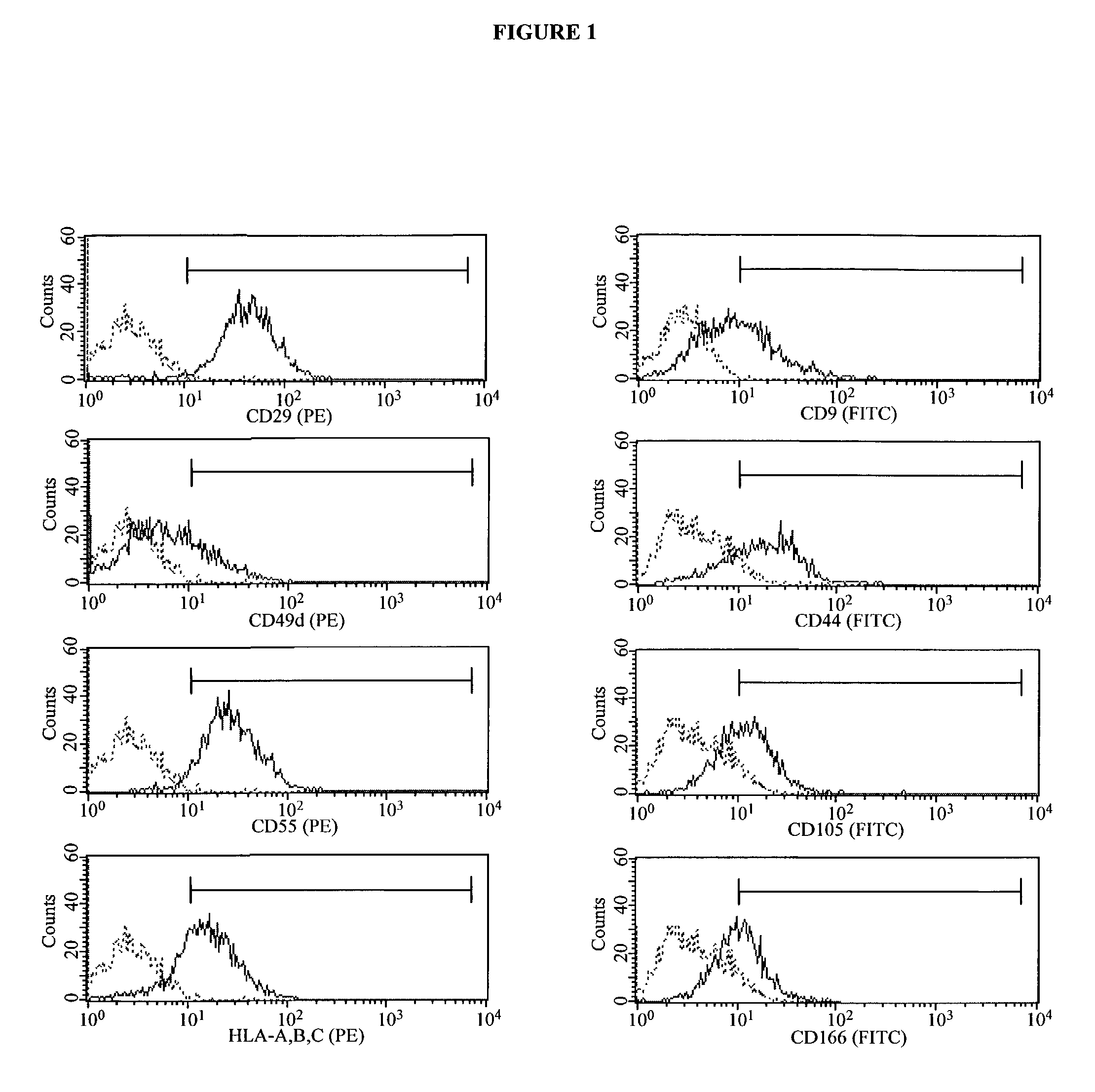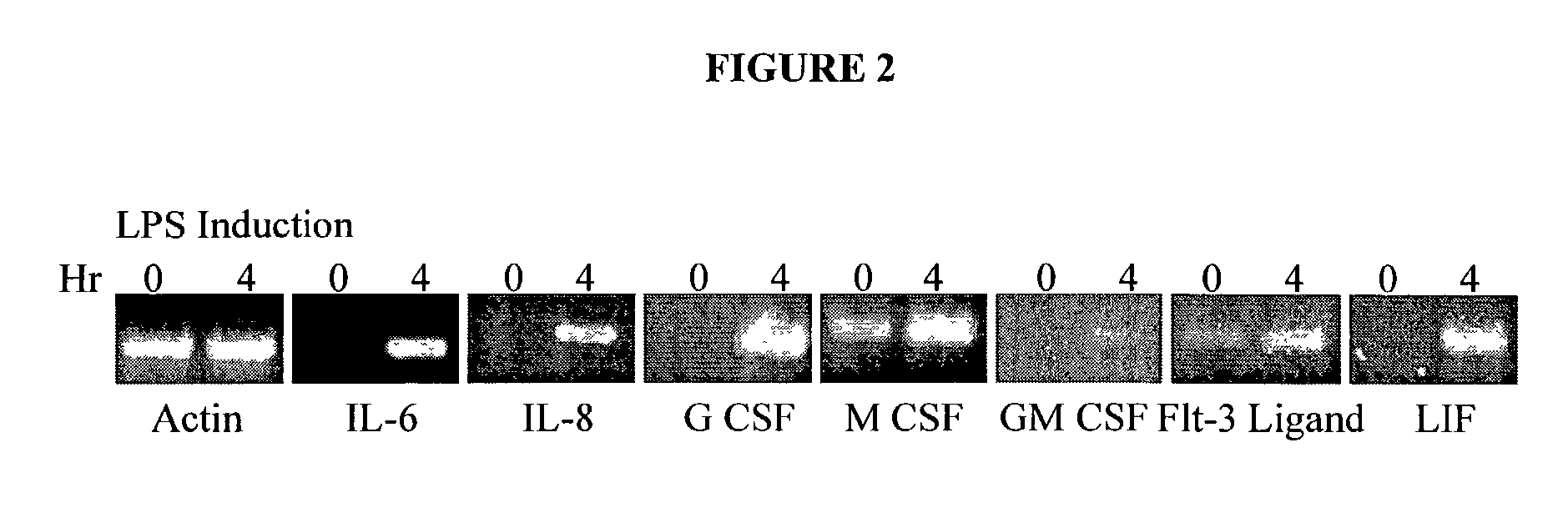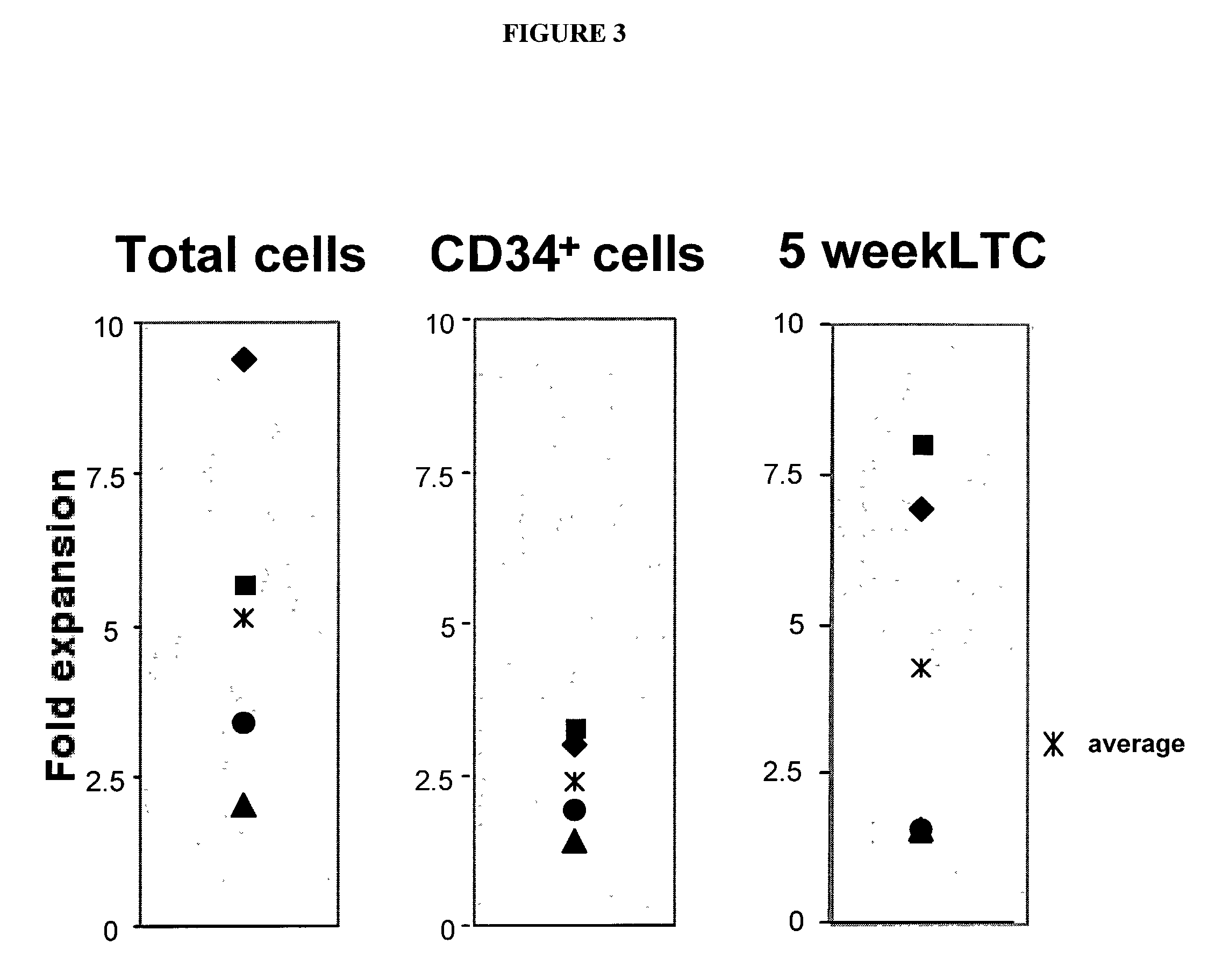Methods and compositions for the use of stromal cells to support embryonic and adult stem cells
- Summary
- Abstract
- Description
- Claims
- Application Information
AI Technical Summary
Problems solved by technology
Method used
Image
Examples
example 1
In Vitro Support of Embryonic Stem Cells by Irradiated Human Adipose-Derived Stromal Cells
[0073] Irradiation of the adipose tissue-derived stromal cells allows them to be used to support the proliferation of human embryonic stem cells in vitro. Studies are performed in the absence or presence of exogenous growth factors, including but not limited to, leukemia inhibitory factor, IL-1 through IL-13, IL-15 through IL-17, IL-19 through IL-22, granulocyte macrophage colony stimulating factor (GM-CSF), granulocyte colony stimulating factor (G-CSF), macrophage colony stimulating factor (M-CSF), erythropoietin (Epo), thrombopoietin (Tpo), Flt3-ligand, BAFF (novel ligand of TNF family for B cell activating factor), artemin (a neurotrophic factor belonging to the GDNF family), bone morphogenic protein factors, epidermal growth factor (EGF), glial derived neurotrophic factor, lymphotactin, macrophage inflamamatory proteins (alpha and beta), myostatin (also known as Growth Differentiation Facto...
example 2
In Vitro Support of Human Embryonic Stem Cell Lines by Irradiated Human Adipose-Derived Stromal Cells
[0079] Prior to any experiment, human adipose tissue-derived stromal cells are plated at a density of between 10.sup.3 to 10.sup.5 cells per cm.sup.2 in stromal medium [Halvorsen et al, 2001, Tissue Eng. 7(6):729-41] as in Example 1. The cells are maintained in culture until confluent, at which time they are mitotically inactivated with 3500 to 5000 rads (1 rad=0.01 Gray) gamma irradiation. Existing human embryonic stem cell lines are dissociated from a murine embryonic fibroblast feeder layer by exposure to calcium and magnesium free phosphate buffered saline with 1 mM EDTA or other divalent cation chelator, by exposure to dispase (10 mg / ml), or by mechanical dissociation with a micropipette [Thomson et al. 1998, Science 282:1145-1147]. The resulting individual cells and cell clumps are plated onto the established irradiated human adipose tissue-derived stromal cell feeder layer. Cu...
example 3
Gene Therapy Modifications
[0082] The following experimental outline describes an approach to convert adipose tissue-derived stromal cells into cells expressing factors, including but not limited to, leukemia inhibitory factor, IL-1 through IL-13, IL-15 through IL-17, IL-19 through IL-22, granulocyte macrophage colony stimulating factor (GM-CSF), granulocyte colony stimulating factor (G-CSF), macrophage colony stimulating factor (M-CSF), erythropoietin (Epo), thrombopoietin (Tpo), Flt3-ligand, BAFF (novel ligand of TNF family for B cell activating factor), artemin (a neurotrophic factor belonging to the GDNF family), bone morphogenic protein factors, epidermal growth factor (EGF), glial derived neurotrophic factor, lymphotactin, macrophage inflammatory proteins (alpha and beta), myostatin (also known as Growth Differentiation Factor-8), neurturin, nerve growth factors, platelet derived growth factors, placental growth factor, pleiotrophin, stem cell factor, stem cell growth factors, ...
PUM
| Property | Measurement | Unit |
|---|---|---|
| Fraction | aaaaa | aaaaa |
| Time | aaaaa | aaaaa |
| Density | aaaaa | aaaaa |
Abstract
Description
Claims
Application Information
 Login to View More
Login to View More - R&D
- Intellectual Property
- Life Sciences
- Materials
- Tech Scout
- Unparalleled Data Quality
- Higher Quality Content
- 60% Fewer Hallucinations
Browse by: Latest US Patents, China's latest patents, Technical Efficacy Thesaurus, Application Domain, Technology Topic, Popular Technical Reports.
© 2025 PatSnap. All rights reserved.Legal|Privacy policy|Modern Slavery Act Transparency Statement|Sitemap|About US| Contact US: help@patsnap.com



